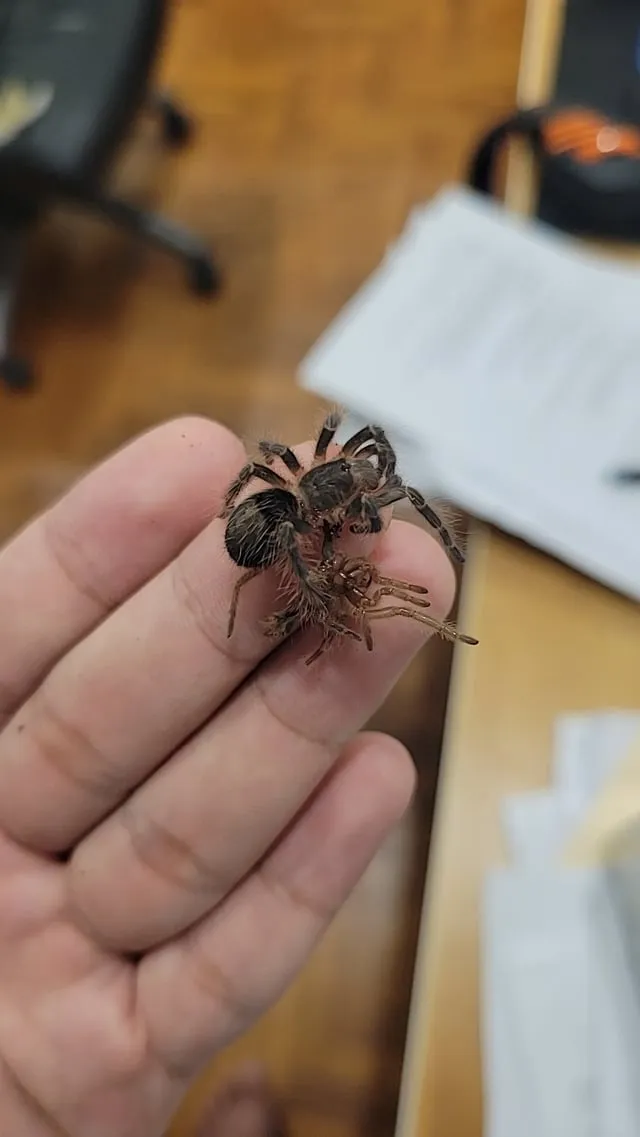Understanding Tarantula Molting
Tarantulas, like all arthropods, possess an exoskeleton that doesn’t grow. This rigid outer shell provides protection and support but limits growth. To overcome this, tarantulas undergo a fascinating process called molting, where they shed their old exoskeleton and reveal a new, larger one beneath. This is a critical period in a tarantula’s life, as it’s when they grow and replace any lost limbs or damage. Understanding the molting process is vital for any tarantula owner to ensure their pet’s health and well-being. This guide will delve into the intricacies of molting, providing you with the knowledge to support your tarantula through this transformative experience. This process allows them to grow and replace damaged or missing limbs. The frequency of molting depends on the tarantula’s age, with juveniles molting more often than adults.
The Molting Process Explained
Molting is a complex physiological process. It begins with the tarantula forming a new exoskeleton underneath the old one. As the new exoskeleton develops, the old one starts to detach from the tarantula’s body. This is when the tarantula starts to show signs of the pre-molt phase. The tarantula will then position itself on its back and, through a combination of muscle contractions and fluid intake, forces the old exoskeleton to split open. The tarantula then carefully extracts itself from the old shell, leaving behind a perfect, albeit empty, replica of itself. The process can take from minutes to hours, depending on the size and species of the tarantula. After molting, the new exoskeleton is soft and vulnerable, requiring time to harden. During this time, the tarantula is extremely susceptible to injury. They are also very vulnerable to dehydration during and after molting.
Pre-Molt Symptoms
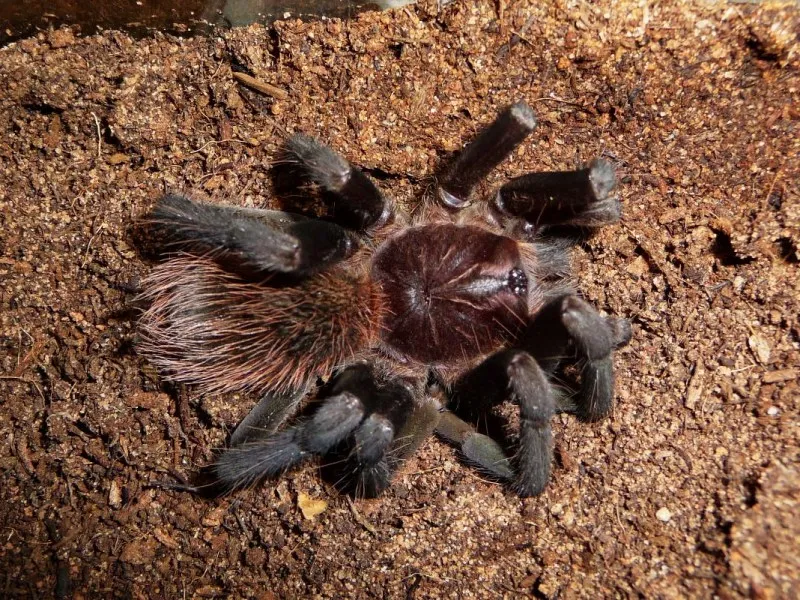
Recognizing the signs of an impending molt is key to providing the right care for your tarantula. Several behavioral and physical changes indicate your tarantula is preparing to molt. One of the most noticeable signs is a decrease in appetite; your tarantula may refuse food altogether. The abdomen may appear dark, swollen, and shiny. The tarantula may become lethargic and spend more time hiding in its burrow or a secluded area of its enclosure. You might also notice changes in the color of the tarantula’s exoskeleton, which may appear duller or more faded than usual. These are all indicators that the molting process is about to begin. By observing these pre-molt symptoms, you can prepare your tarantula’s enclosure to create the best conditions for a successful molt.
What to Do Before Molting
Proper preparation before a molt is essential to the tarantula’s safety. During the pre-molt phase, it’s best to stop feeding your tarantula. Offer food, but do not leave uneaten prey in the enclosure. Remove any uneaten food to prevent the tarantula from being disturbed during the process. Ensure the enclosure has the proper humidity and temperature levels, because the tarantula will be very vulnerable during the molt. Avoid handling your tarantula during this time, as it could be very stressful. Provide a water dish with fresh water, this will help maintain hydration. Keep the enclosure undisturbed and free from any vibrations or disturbances. Creating a safe, stable, and comfortable environment will increase the likelihood of a successful molt.
Creating the Right Environment
Creating the right environment is very important for a successful molt. This involves carefully managing several aspects of the tarantula’s habitat. The aim is to minimize stress and provide the necessary conditions for the molting process to proceed safely and efficiently. You must make sure the tarantula is not under any stress. Make sure the environment is safe and comfortable, away from all disturbance.
Humidity and Temperature
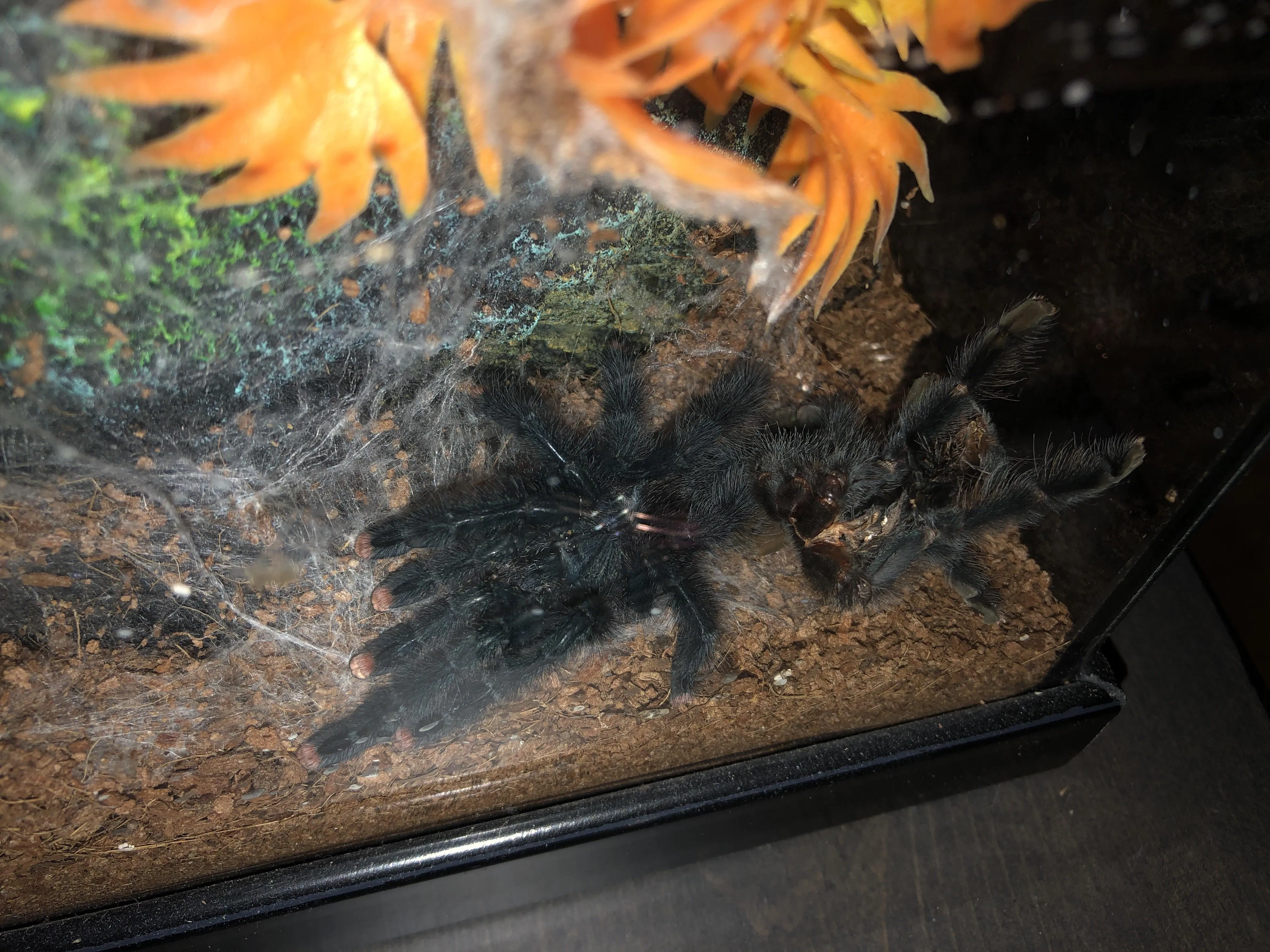
Maintaining the correct humidity and temperature levels is crucial. Research the specific needs of your tarantula species and adjust accordingly. Use a hygrometer to monitor humidity, and mist the enclosure regularly, if necessary, to maintain the appropriate level. Providing a shallow water dish with fresh water will also help maintain proper humidity. Temperature is also a factor. Ensure the enclosure is at a stable temperature appropriate for your tarantula’s species. Avoid placing the enclosure in direct sunlight or near heat sources that could cause fluctuations in temperature. A stable environment ensures the molting process is as smooth and safe as possible.
Providing a Safe Space
Ensure the tarantula has a safe space to molt. Provide ample substrate for burrowing species to dig a burrow. For arboreal species, offer a sturdy hide, such as a piece of cork bark, where they can feel secure. Minimize any potential hazards, like sharp decorations, that could injure the tarantula during the molt. Keep the enclosure clean and free from debris. Avoid disturbing the tarantula during the molt process, as any disturbance can stress the tarantula and interfere with a successful molt. A safe space is paramount.
The Molting Phase
During the molting phase, it’s important to observe from a distance and avoid any interference. The tarantula will typically lie on its back to shed its exoskeleton. This can take several minutes to several hours. Avoid any actions that might disturb the tarantula during this time. Ensure the enclosure is free from vibration, loud noises, and other potential stressors. Be patient and allow the process to unfold naturally. Once the molt is complete, the tarantula will remain in a vulnerable state, so it’s vital to maintain a safe environment. They will be very sensitive.
Recognizing a Successful Molt
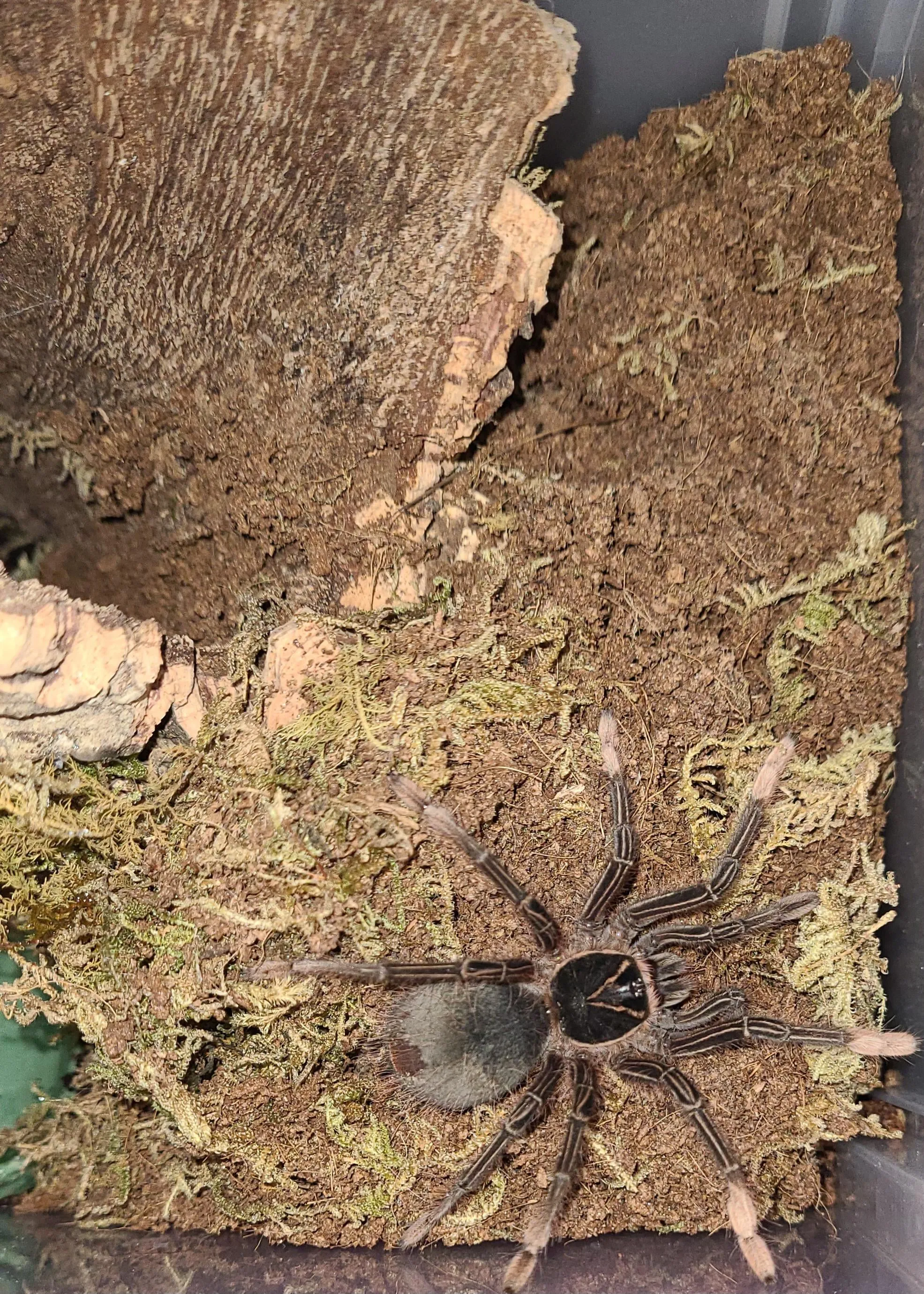
A successful molt is evident when the tarantula emerges from its old exoskeleton. The newly molted tarantula will have a brighter color, and its new exoskeleton will be soft. You’ll see a perfect replica of the tarantula’s body, including the old exoskeleton. In a successful molt, the tarantula’s legs and body parts will be intact and undamaged. The tarantula will then remain in a vulnerable state as the new exoskeleton hardens. It will take time for the new exoskeleton to fully harden. After the molt, you’ll notice the tarantula’s growth, particularly in size. After it has molted, it will be very fragile.
Post-Molt Care and Feeding
The post-molt period requires special attention to ensure your tarantula recovers properly. The tarantula’s exoskeleton is very soft after a molt, making it vulnerable to injury. Avoid handling the tarantula for at least a week or two, or until the exoskeleton has fully hardened. It’s important to provide appropriate nutrition and hydration. The right care and nutrition will help them strengthen.
When to Start Feeding
Do not attempt to feed your tarantula immediately after it molts. The chelicerae (fangs) will need to harden so the tarantula can successfully eat the prey. Wait at least a week, or until the fangs have fully hardened and the exoskeleton appears to be firmer. You can test the firmness by gently touching the tarantula’s legs; they should feel firm. You can offer a small amount of food at first, and if the tarantula is ready, it will readily accept the meal. If your tarantula doesn’t eat, remove the prey and try again in a few days. Be sure not to leave the food in the enclosure for long.
Choosing the Right Food
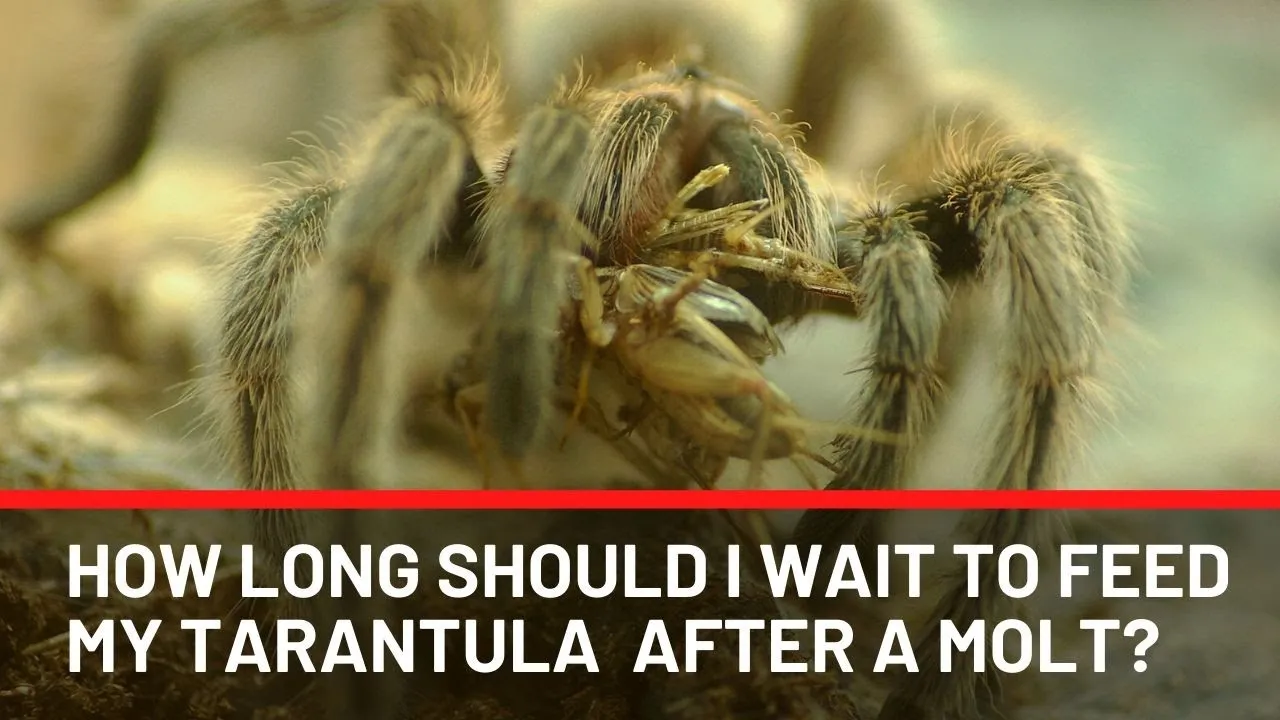
When your tarantula is ready to eat, offer appropriately sized prey. The prey should be no larger than the tarantula’s body. Crickets, mealworms, roaches, and other commercially available insects are common food choices. Ensure the prey is healthy and free from pesticides or other harmful substances. Variety can be good. Monitor your tarantula’s feeding behavior, adjust the food size and quantity as needed, and ensure the tarantula is getting the necessary nutrients. Always ensure the prey is appropriate for the size of your tarantula.
Maintaining Proper Hydration
Proper hydration is essential for a tarantula’s recovery after molting. Provide a shallow water dish with fresh, clean water at all times. Make sure that the water dish is accessible. If the humidity in the enclosure is low, you may mist the enclosure lightly, but be careful not to over-saturate it. Hydration is essential to helping the tarantula recover and thrive. Ensure the tarantula has constant access to water.
Common Problems After Molting
Even with the best care, complications can sometimes arise after a tarantula molts. Knowing how to identify and address these problems is crucial for your tarantula’s well-being. It’s important to monitor your tarantula closely and be ready to take action if there are problems.
Injuries During Molt

Injuries during molting can occur if the tarantula is disturbed or the environment is not ideal. Damage to the exoskeleton or limbs is possible. If your tarantula sustains an injury during a molt, it is important to assess the extent of the damage. Small injuries may heal on their own with the next molt. For more serious injuries, consult with a veterinarian specializing in exotic animals. Provide a clean environment and avoid handling the tarantula until the exoskeleton has fully hardened to reduce the risk of further injury. Preventative measures include providing a safe, undisturbed environment.
Dehydration
Dehydration is a serious concern after molting because the tarantula’s new exoskeleton is very soft and can lose moisture more quickly. Signs of dehydration include a shriveled abdomen, lethargy, and lack of appetite. Provide fresh water at all times. If you suspect your tarantula is dehydrated, mist the enclosure lightly to increase humidity and encourage the tarantula to drink. In severe cases, you may need to carefully offer water directly to the tarantula’s mouth using a syringe or dropper. Ensure the tarantula has access to water and the enclosure has the proper level of humidity.
Failed Molts
A failed molt occurs when the tarantula is unable to fully extract itself from its old exoskeleton. This can be caused by a variety of factors, including low humidity, insufficient space, or underlying health issues. If you notice your tarantula struggling to molt, do not try to forcibly remove the old exoskeleton. Increasing humidity and providing a safe, undisturbed environment may help. However, the tarantula may not survive a failed molt. If the tarantula is struggling, consult a veterinarian specializing in exotic animals immediately.
Handling Your Tarantula After Molt
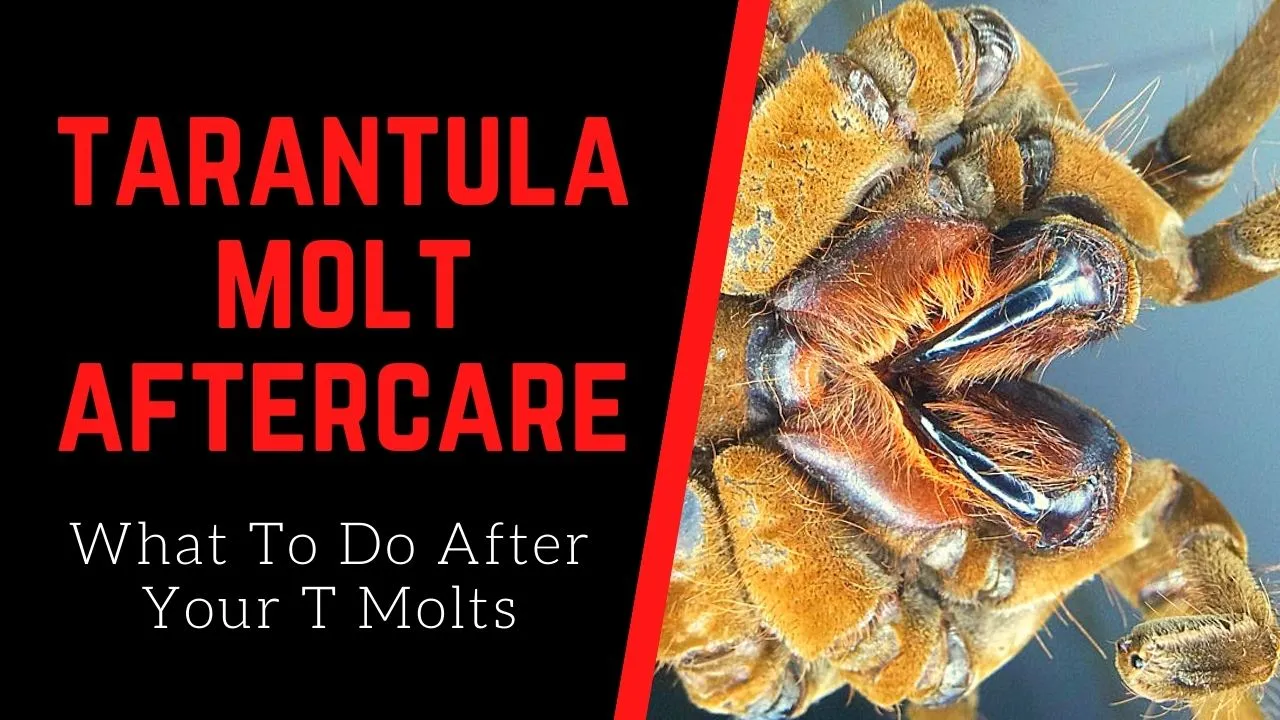
After a successful molt, the tarantula is in a vulnerable state. Avoid handling the tarantula for at least a week or two, or until the exoskeleton has completely hardened. This allows the tarantula’s new exoskeleton to strengthen and reduces the risk of injury. After the exoskeleton has hardened, handling your tarantula is possible. Even after the exoskeleton has hardened, approach with care. Observe your tarantula’s behavior. If it seems stressed or defensive, avoid handling it. Always wash your hands before and after handling. Providing the right care can help it to live a long and healthy life. Remember, molting is a natural and essential process for a tarantula’s growth and well-being. By understanding the process, providing the proper care, and being vigilant for potential problems, you can help ensure your tarantula thrives.
